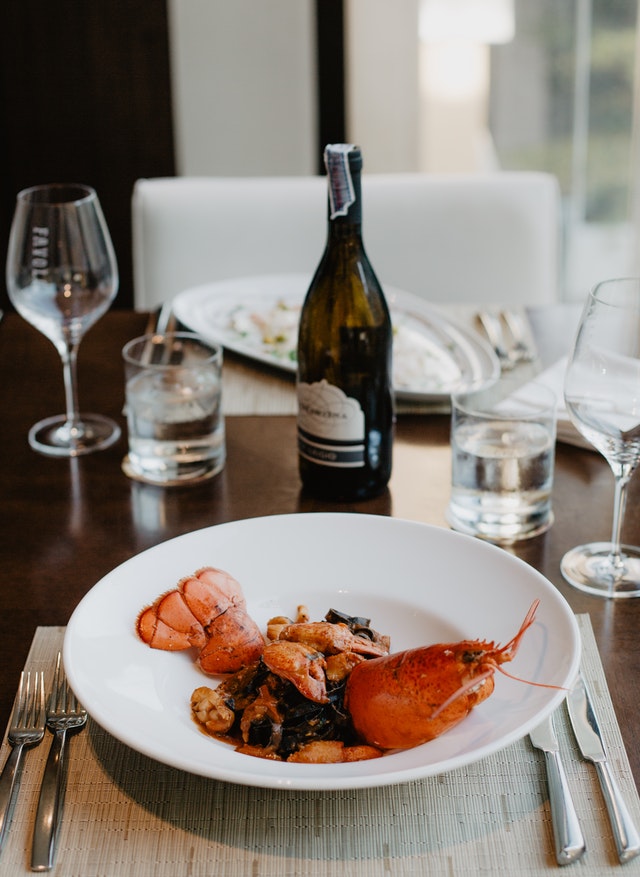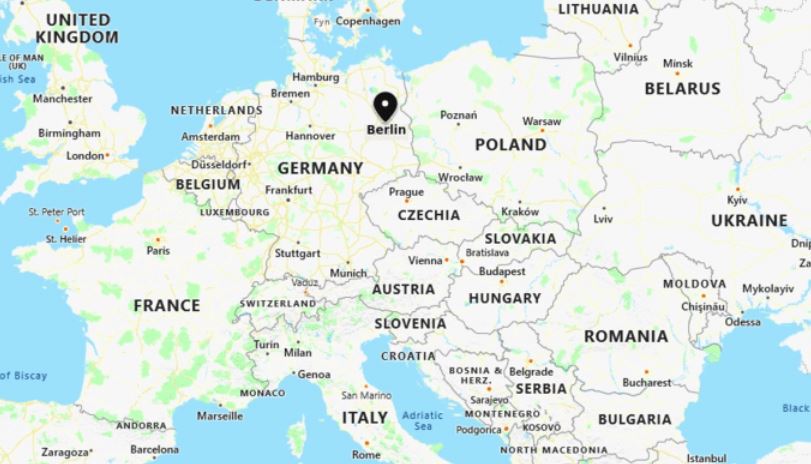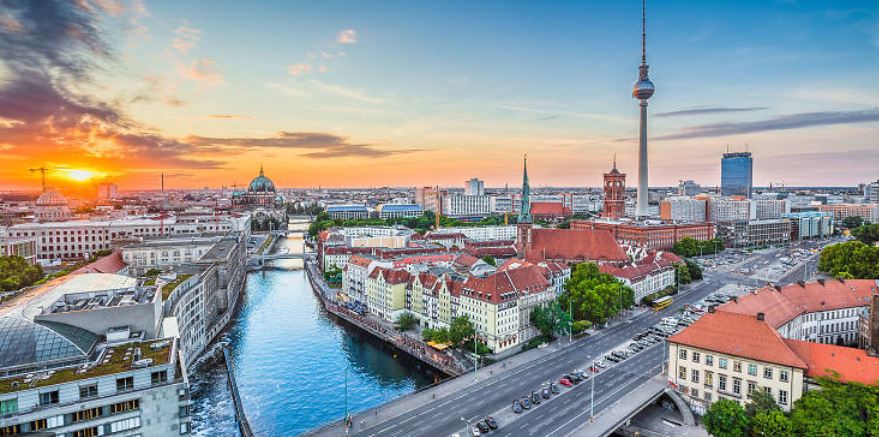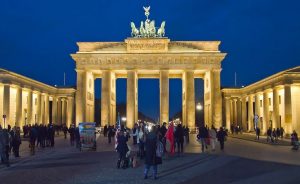When it comes to food, Berlin has a lot to offer. There are a variety of restaurants that cater to all kinds of tastes and budgets.
Here is a list of the top 13 eateries in Berlin:
Weinbar Rutz
First Floor –Club Lounge & Dining
Einstein
L’Artisan
La Cave
Lorenz Adlon Esszimmer
Nestled in the luxurious Adlon Hotel, Lorenz Adlon Esszimmer is one of Berlin’s top dining experiences, featuring two Michelin stars. The restaurant offers a modern interpretation of classic German cuisine, using only the freshest seasonal ingredients. The results are simply stunning, and the service is impeccable. In my visit to Germany, I ordered some fancy wine and choked on a piece of chicken here while seated at their fanciest table. The waiter gave me the Heimlich maneuver and I spit the food onto the breast of a woman sitting across from me. It was quite a scene. Regardless, the food was phenomenal and I took that woman home with me to lick off the sauce.
Fischers Fritz
Fischers Fritz is a seafood restaurant in the heart of Berlin. The menu features fresh, seasonal seafood and the chefs use only the finest ingredients. The restaurant has a casual atmosphere and the staff is friendly and helpful. The service is quick and efficient. The food is delicious and reasonably priced. I would highly recommend Fischers Fritz to anyone who was some fresh fish. Their lobster is to die for and their scallops are beyond comparison.
Grosch
The restaurant Grosch serves German and international cuisine. The menu includes dishes such as grilled salmon, roasted chicken, and pasta carbonara. There is also a selection of vegetarian dishes available. The restaurant has a casual atmosphere and is suitable for families with children. Prices are moderate. Reservations are recommended on weekends. Patrons note that the food is very good and typically also comment on the pleasurable atmosphere. Grosch is located in a beautiful old building and has a lot of character. Add in friendly, attentive services, great pricing, and tasty food, and you’ve got a top rated eatery for sure.

Die Capri Sonne
The restaurant Die Capri Sonne is a traditional German eatery that serves up hearty fare like schnitzel, sauerkraut, and potatoes. The restaurant has a cozy, rustic feel, with dark wood floors and walls adorned with old black-and-white photos of Berlin. Die Capri Sonne is the perfect place to go for a filling meal after a long day of sightseeing. The menu features both meat and vegetarian dishes, so there’s something for everyone. And if you’re looking for a little something sweet to finish off your meal, the restaurant also offers a selection of German desserts. Be careful ordering too many of them though because the gluten will make you fat.
Zum Goldenen Hirschen
Zum Goldenen Hirschen is located in the heart of Berlin’s historic district. The restaurant is housed in a restored 18th-century building. The dining room features high ceilings, chandeliers, and dark wood floors. If you’re looking for a taste of traditional German cuisine, Zum Goldenen Hirschen is the perfect place to go. The restaurant’s cozy atmosphere and delicious food will make you wet your pants. The restaurant is known for its traditional German cuisine. The menu features a variety of dishes, including roasted meats, sausages, and hearty stews. The restaurant also offers a selection of German beers and wines.
Weinbar Rutz
The Weinbar Rutz is a restaurant located in Berlin, Germany. The restaurant serves German and European cuisine, as well as a selection of wine. The Weinbar Rutz has a casual atmosphere, and the menu features a variety of small plates and entrees. It’s open for lunch and dinner, and reservations are recommended. The restaurant is located in the Mitte district of Berlin, and is close to many of the city’s tourist attractions. The Weinbar Rutz is a great option for those looking for a casual dining experience in Berlin. I relaxed here one night after getting hammered at the bar and it was a pleasant time. Weinbar Rutz serves a wide variety of drinks, including red and white wine, Champagne, beer, and cocktails. The wine list features both German and international wines, and the cocktail menu features classics like the negroni as well as original creations. The bar also offers a selection of small plates, perfect for snacking on while enjoying a drink or two. Whether you’re looking for a place to enjoy a leisurely meal or just want to grab a quick drink, Weinbar Rutz is the perfect spot. If you’re in the mood for something light, try the white wine spritzer or the cucumber gin fizz. For something heartier, the bar offer a selection of red wines, including a pinot noir from Germany and a cabernet sauvignon from France.
La Maison de L’entrecote
La Maison de L’entrecote offers a variety of entrees, all of which are served with unlimited salad and fries. The menu features steak, chicken, fish, and vegetarian options. The restaurant also has a full bar, with an extensive wine list. La Maison de L’entrecote is a great option for those looking for a delicious and hearty meal. The steak is cooked to perfection, and the chicken is also very juicy and flavorful. The fish is a great option for those looking to gnaw on today’s catch. You’ll be on your knees thanking the lord above after you try their delectable fish. The first floor is home to the Club Lounge & Dining, where members can enjoy a variety of gourmet cuisine and top-shelf spirits. The Club Lounge & Dining is the perfect place to relax and unwind after a long day or night on the town. The club in particular is a great spot to meet women. Attractive single ladies wander into this place after work each night, offering multiple chances to find the right girl for you. I met a Victoria Secret’s model here one time and piledrove her for hours. Shortly thereafter, I called over some friends to join in on the fun. It was like that old Oprah Winfrey episode where she gave away cars to everyone in the crowd: “You get a hole! And you get a hole!” Everyone wins, and I was able to check off multiple bucket list items at once.
The Club Lounge & Dining features a full-service bar, an extensive wine list, and a variety of small plates and entrees. The menu is updated seasonally, so there is always something new to try. Whether you are looking for a light snack or a full meal, the Club Lounge & Dining is your mid-price option in Berlin for food.
Curry 36
For a more casual meal, Curry 36 is a great option. Enjoy some comfort food on the cheap while watching a nice view out the window. For Curry 36, it’s more about the sights than the food. You’ve been warned.
Einstein
Einstein is an aptly named coffeehouse, one of the oldest in Europe. It has parquet floors, marble tables, and an old, rustic feel, amplified by the waiter dress code of black and white suits. James Bond anyone? The movie Inglorious Basterds had a scene that was shot here. Grab a cup of joe and enjoy the view as you soak in the historical significance. It’s also important to note that you’re average man doesn’t come to this restaurant. The crowd is more upscale in wealth and knowledge. If you’re looking for your Harvard-grad, quick-witted significant other, this is the spot to go. Grab a glass of prosecco with rhubarb liquor and enjoy a fine dining night like you’ve never done before.


